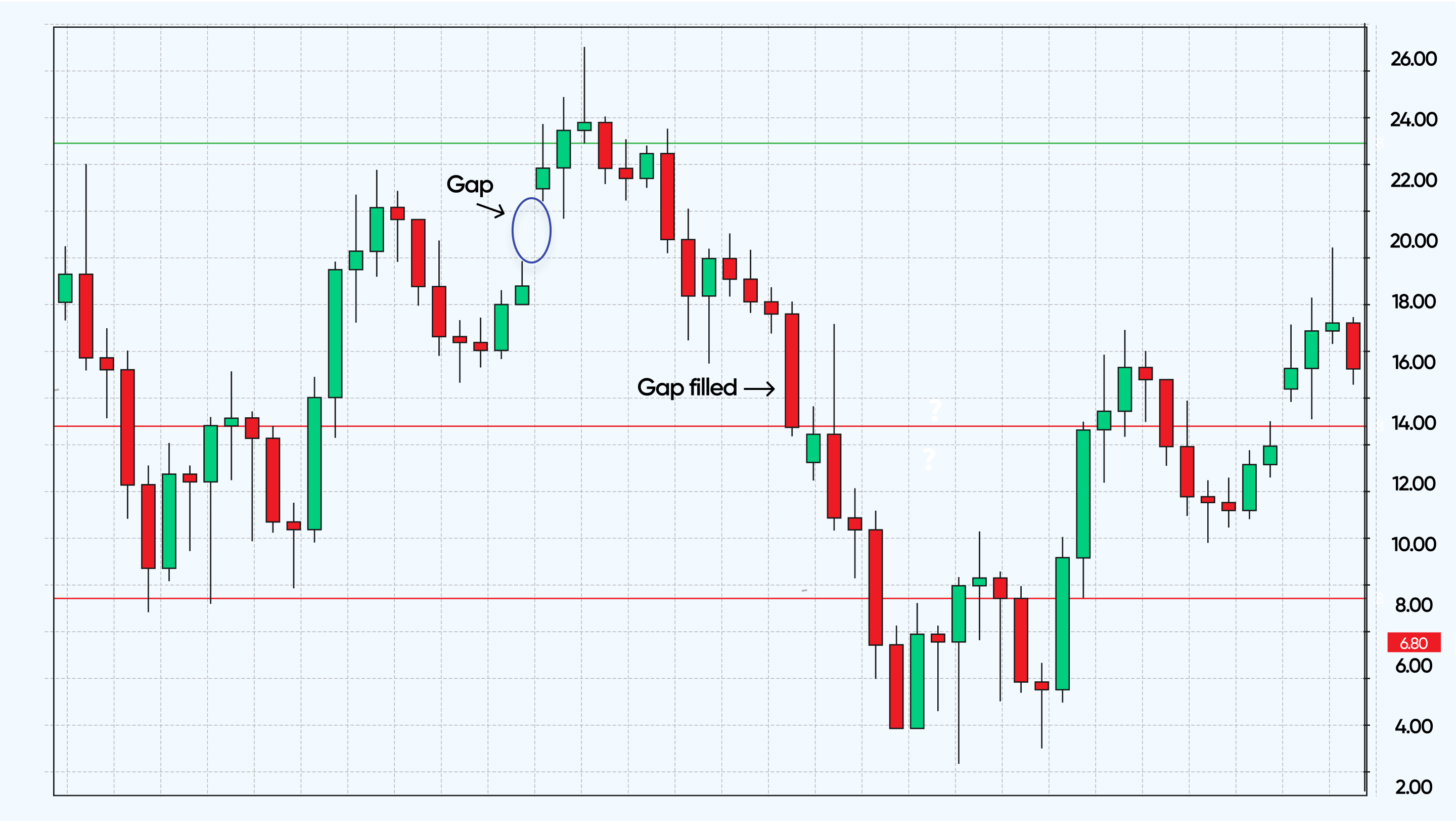Risk management in Forex is essential to individuals, groups of individuals, and organizations since it enables them to implement measures that help mitigate Forex risk and its negative impact. An effective risk management policy requires robust planning from the beginning to make the Forex trade profitable. If an investor identifies risk well before time, it helps them cut down losses and protect the trader’s account against losing all the money invested. Most Forex risks occur through adverse fluctuations in the exchange rate that affects the value of investor’s cash flows, assets, or liabilities.
What are the significant risks that a Forex trader faces?
Orders are one of the most effective tools that help you manage your risk in a more defined manner. Orders should always be considered a part of your overall trading strategy; however, one must understand that orders do not always limit your losses but surely help protect your profits. A trader shall always ensure to understand and determine their risk tolerance before they enter a trade, and use protective orders while entering into a position. The proper strategy analysis can assist the trader in using orders to manage risk.
Here is you can manage risk in Forex in 7 steps:
1. Understand, analyze and determine your risk tolerance
Personal risk tolerance varies from investor to investor and is an important factor that affects trading experiences and decisions. It is the investor’s ability to sustain losses psychologically and is the potential amount of money his trading capacities allow him to forgo. For Forex trading beginners, the recommended risk tolerance is no more than 2% of the total account value. When traders are new in the Forex market, factors like lack of knowledge and experience along with unfamiliarity with Forex trading, in general, prevents traders from gulping down significant losses. As and when the trader becomes more familiar with the market and gains experience, they become more confident and are able to increase their risk tolerance. However, even advanced traders do not stomach losses over 5% of their total account value. Hence, the higher your risk tolerance, the faster you drain your account entirely if you fall into the trap of losses. So, it is crucial to determine and understand one’s risk tolerance as a primary step in Forex risk management.
2. Size your trade position
The position size is basically the total lots you take on a trade. The major lots in Forex trading are micro, mini, and standard. Beginners are recommended to work with micro and mini lots as when a position size is too big or too small, an investor exposes themselves to either too much risk or too little risk. Risk management for Forex trading has rules and regulations that help you determine the correct position/trade size for your Forex trade, majorly depending on your experience level and account size. The ideal position size that goes with the regulations is calculated by dividing the total money at risk by the investor’s trade risk.Sticking to the ideal position size prevents your account from wiping off in the event of a negative situation in the market.
3. Avoid weekend gaps
The Forex market is open for 5 days a week. However, that does not mean that the Forex market is entirely closed from Friday afternoon to Monday morning as the prices still move based on prevailing situations over the weekend. Sometimes, weekends witness important events and changes causing dramatic movement of the prices, resulting in market gaps. Such weekend gaps can run between the stop loss you intend or your profit targets, exposing the trade to more enormous losses. However, if you follow an effective risk management strategy, you can avoid the negative impacts of such weekend gaps and minimize your risk.

4. Manage your trade time
Since the Forex market is open for the entire day, Monday to Friday, it is natural that you miss out on opportunities as a trader during times when you are not on your computer. However, one cannot trade continuously for 5 days. Hence, a solid strategy that ensures that you are online to trade when suitable opportunities arise is needed, which needs you to manage your trading time in an intelligent way. A trader needs to find a suitable time frame that works for them with a set of hours per day dedicated to trading. When a trader manages their time, they manage their risk as well because choosing the right time to trade leads to happy and successful trading in the long run.
5. Be aware of the current situations and watch the news regularly
A good risk management strategy always involves traders being up-to-date about news events, announcements, reports, and more. Being aware of all these things act as a natural helping hand in mitigating risk. News events related to employment, central bank decisions, crises possibility, inflation reports, and more create significant moves in the Forex market, and being updated about these announcements prevents you from possible losses. It helps you make risk-conscious decisions; hence, it is advised that traders should always follow economic and financial news calendars to ensure that they manage their trading risk efficiently.
6. Don’t risk what you cannot lose
Never invest more than what you can afford to lose. Profits from investing are undoubtedly exciting. However, a trader must never forget that they should only invest amounts they can stomach as losses. It is recommended that traders do not put their entire savings in their account because it could lead to a heavy financial and emotional loss for the investors if once lost. Ensure that you only invest in a consistent, intelligent, and mindful way of how much your risk appetite is, along with the savings you withhold and the capital you can afford to be disposed of.
7. Formulate a plan and stick to it
Every trader must draft a Forex plan and stick to it. If you dive into the Forex market without a proper plan and preparation, it increases your risk of suffering hefty losses. Planning your goals, motives, and how you plan to achieve these goals in advance is a must. Such a plan should outline basic trading activities that you are planning to perform and the strategies you will be following., develop a set of rules that, no matter what, you will stick with consistency, commitment, and knowledge while making trade decisions and will not fall into the trap of excitement and impatience. Having the right trade plan in hand will help you manage and mitigate your risk, as you will have a guide to follow, over and above which no trading decisions will be undertaken. The plan must include making informed decisions at a priority, which will help a trader stay away from losses as much as possible.
- Exchange rate risk: This is an unavoidable risk caused due to fluctuations in the investor's local currency compared to the foreign investment currency. However, it can be mitigated to quite some level through robust hedging techniques and strategies.
- Interest rate risk: The higher the rate of return is, the more interest is accrued to the investor on the currency they invest. This results in higher profit. However, the opposite of this results in significant losses, exposing investors to increased risks.
- Credit risk: A credit risk is a risk that a counterparty defaults when they fail to make a promised payment. This decreases the creditworthiness of the borrower (in this case, the Forex trader). It also exposes lenders (in this case, the broker) the risk of not being able to recover the principal amount with interest, exposing them to the loss of the sum of money they borrowed.
- Country risk: Country risk is the risk that traders face on the occasion of investing or lending due to an intense economic crisis, political instability, or an overall disrupted environment in the buyer's country. This decreases the country's ability to pay for imports, degrading their currency value, imposing risks for traders who have invested in that currency's Forex.
- Liquidity risk: Such a type of risk occurs when an entity fails to meet its short-term debt obligations. When an individual or entity is not able to convert their asset into cash without giving up their capital and income due to a lack of buyers, the Forex market risk is enlarged.
- Leverage/marginal risk: It is that risk when a trader goes bankrupt after entering a forward Forex trade. The issuer then has to close the commitment of paying the marginal movement as mentioned in the forward contract, increasing his risk and losses.
- Transaction risk: It is the adverse effect that Forex rate fluctuations witness on a completed transaction. Such a risk is associated with the delay between entering the position and settling it and can lead to major losses if not identified on time.
What orders are used to manage risk?
Limit Orders
Limit orders are used when you enter into a position, and their main aim is to protect profits. It lets you be in the winning position, and who does not love the fulfilling feeling of being in a comfortable place? However, Forex markets very rarely go in a particular direction for more than usual time. Hence, it becomes essential for a trader to determine their price point that fixes the position with gains before placing a trade position, if they want to manage and avoid risks related to a deteriorating Forex.
Stop Orders
Stop orders are one of the most widely used orders that limit losses and successfully manage downside risk. Especially when a trader is under pressure, their mind tries every possible trick to get out of the stressful situation. However, if you enter a position without placing a stop order, you expose yourself to the psychological effects of 'just one more time' as there is no barrier that stops you after a specific limit/position.
Trailing Stops
Such orders allow you to guard against all your profits while also limiting the downside risks, providing you with the best of both worlds. If you are having a tough time making a particular level of profit and want to push the position along with limiting the losses, a trailing stop is an effective order type. It protects your earnings on the upside and attempts to mitigate losses on the downside as well. A trailing order enables the trader to specify the number of PIPs according to the current rate, which will then trigger the market order. These specified numbers of PIPs will then trial the trader's order as and when the market moves in the trader's favor. In case of the market moving against the trader, the triggered market order will execute the trade at the next available rate, also highly depending on the currency's liquidity.
Final Words
We now know that foreign exchange risk occurs due to currency fluctuations in the international economy. This can happen due to various reasons, including but not restricted to a natural calamity, a big news announcement, an economic or financial crisis, political instability, a war breakout, and more. It affects not only investors trading in the foreign exchange market but also businesses that offer import/export of products and services. These risks, however, can be successfully managed through order types, as mentioned above. Our Forex trading platform ensures that your trades are secure and transparent and gives you the correct exposure that you need to succeed in the foreign exchange market.




